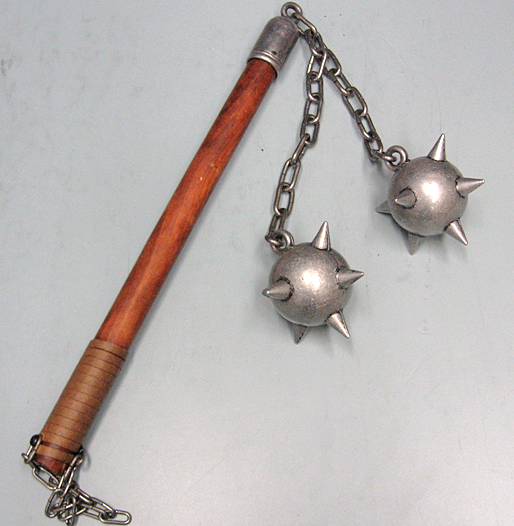Brass knuckles, blowguns and a tube of lipstick that conceals a serrated blade are just a few of the strange and exotic weapons seized at the Canadian border over the past six and a half years.

“As long as there’s a demand for it, people will smuggle it,” said Jerry Jesso, Acting Director of Intelligence for the Canada Border Services Agency’s Greater Toronto region. By that logic, Canadians have a vast appetite for unusual weaponry, with more than 40 thousand firearms and other weapons intercepted by border guards since 2005.
A glance at CBSA seizure records shows how varied these weapons can be. According to a list of prohibited items seized by CBSA officials obtained through Access to Information legislation, 10,447 brass knuckles were stopped between January 1, 2005 and July 12, 2011 – which amounts to one-quarter of all prohibited weapons seized at the border.
Switchblades, replicas, shuriken (ninja throwing stars) and tear gas or pepper spray round out the top five prohibited weapons. With just over 1,000 seized, handguns barely crack the top ten, being slightly more common than push daggers – a prohibited type of knife in which the handle is perpendicular to the blade.
The weapon of choice for smugglers varies by region. In Atlantic Canada, tear gas and pepper spray are the most frequently-seized. On the west coast, the perennially-popular brass knuckles are on top, but Asian martial arts weapons, such as nunchaku and shuriken, are also seized often.
Weapons are concealed with passengers, hidden in cars at border crossings, sent in the mail and found in cargo shipments. Because of tightened security at the airport, not many attempt to fly with a concealed weapon.

Get daily National news
Firearms especially are rarely found at the airport, said CBSA’s Jesso, but other things do sometimes turn up in individuals’ baggage. “We have seen in a checked bag, a switchblade that has been missed by security, or pepper spray, or other items that appear to be one item, but are truly a different item. For example, it could be a lipstick, but actually there’s a knife concealed within the lipstick case.”
At other locations, like at international mail facilities, concealment methods get even more ingenious and seizures are more frequent. “You may see two handguns hidden inside a DVD player that’s coming in as a Christmas gift,” said Jesso.
“I would probably estimate in Canada, there’s probably one to two firearms seized on the border every day.”
Other weapons are even more common, he said.
In an interview at Pearson airport in Toronto, Jesso listed off some of the strange weapons he has seen: playing cards with sharpened edges, belt buckles with knives concealed in them, belt buckles with little one-shot pistols integrated into the design, and cell phones converted to fire .22 round shells.
“The most recent item that I would consider strange would have to be the cell phone taser,” he said. A joint CBSA and Toronto operation recently intercepted 18 of the weapons in Vancouver, destined for a Toronto apartment which turned out to hold many more.
“God forbid those end up in the wrong hands. A taser could be used for a number of criminal activities,” he said.
Individuals attempting to import a large number of prohibited weapons might face charges, he said. Importing prohibited firearms and other prohibited weapons without proper licenses and transportation permits is a violation of the Criminal Code and can result in up to five years of jail time.
The weapons themselves are kept as evidence and eventually disposed of, usually by melting them down.
Some people import weapons for profit, intending to resell them to Canadians, said Jesso. Others bring them in for protection, for criminal activities, or as collectors’ items. He has little sympathy for people who might not know that their weapon cannot legally enter Canada.
“I would say the average citizen would be aware of the fact that a ninja throwing star or a taser would be illegal in the country. The onus is on the general public to be aware of that,” he said.
A list of prohibited weapons and associated regulations can be found on the CBSA website.







Comments